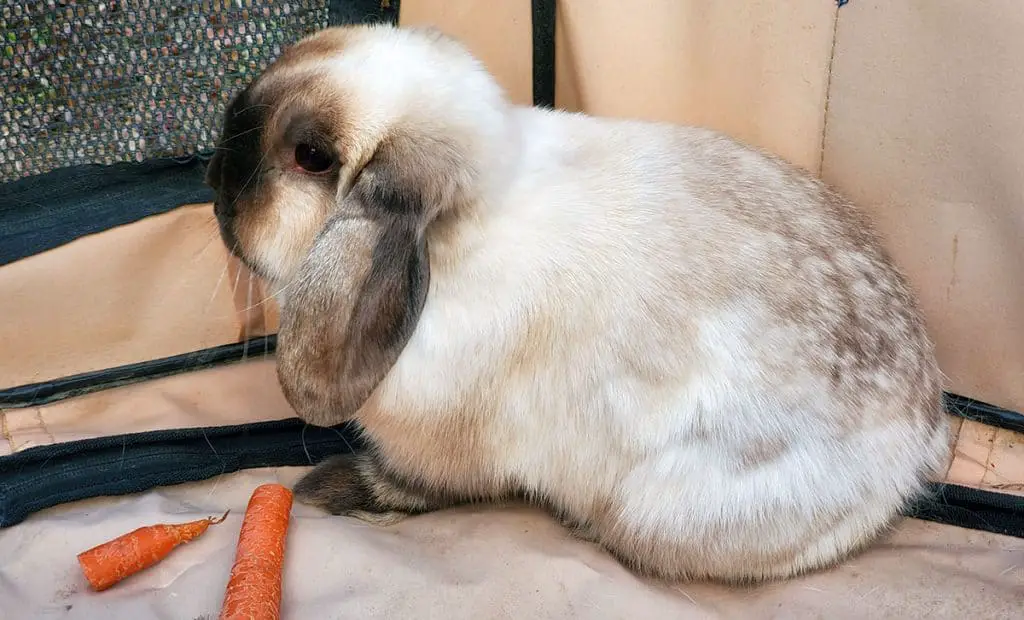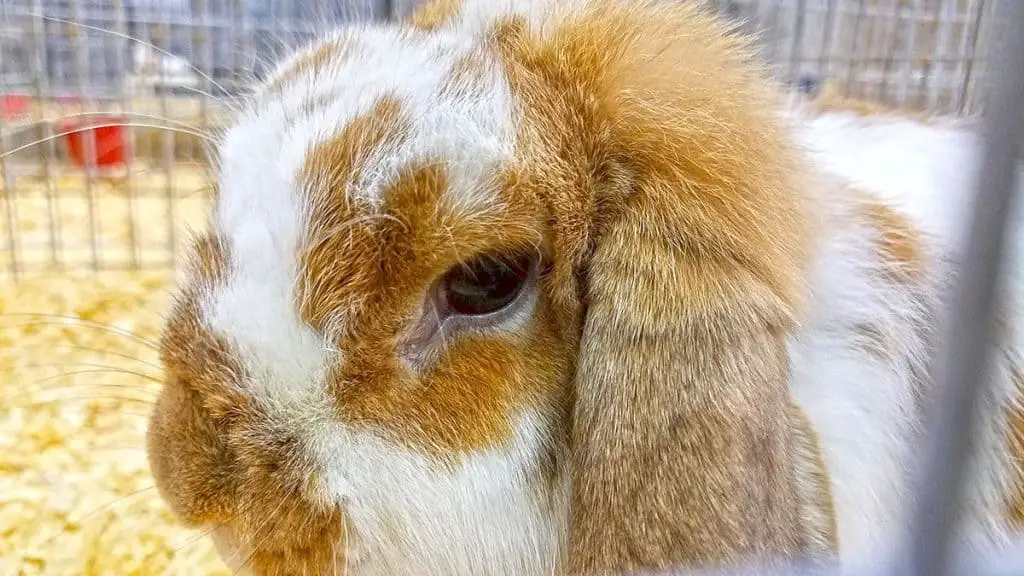Disclosure: We may earn money or products from the companies mentioned in this post.

My family loves Holland Lop Bunnies and have had one as a pet for some time now. The other day, a friend of my daughter asked if Holland Lops lived in the wild. A simple yes or no answer would not suffice, so after doing all the research to satisfy her curiosity, I decided to share it with you too.
Do Holland Lops live in the wild? Holland Lops do not live in the wild and never have. They are a domesticated breed created by cross-breeding two already domesticated rabbits. They are so far removed from their wild ancestry to make survival in the wild extremely unlikely.
Now let’s learn a little more about how these adorable bunnies came to be and if they could survive in the wild.
The Origin Of Holland Lop Rabbits
Holland Lops originated in Holland (The Netherlands) when breeders there crossed a domestic Netherland Dwarf Rabbit with a domestic French Lop Rabbit shortly after the end of World War 2.
After a few decades of breeding Holland Lops, the breed’s standards were formalized in the 1960’s.
Then the adorable new breed began to spread around the world, not as a wild rabbit but as a much sought-after domestic pet rabbit.
As you think about the origin of the Holland Lop, consider that the two breeds of domestic rabbits that were cross-breed to create it had similar origins.
Both of these ‘ancestor’ breeds were first developed in the late 1800s!
This means that a Holland Lops true wild ancestors are at least hundreds of years in it’s past.
There are very little wild instincts remaining in these wonderful pet rabbits!

Are There Any Wild Holland Lop Rabbits?
There are no wild populations of Holland Lop Rabbits.
If you see a Holland Lop in the wild, it’s either an escaped pet or an abandoned pet. And sadly that rabbit has a very short life expectancy once it’s loose in the wild.
That pet rabbit doesn’t know how to dig a burrow to create a safe place to live. Instead, it will probably try to find a small dark place to hide to escape the attention of the preditors in this new wild world it finds itself in.
If the now ‘wild’ Holland Lop came from a home where there were dogs or cats that were friendly to it, the poor rabbit might not even recognize an approaching predator as a threat.
While a Holland Lop might survive for a day or two in the wild, it’s very unlikely that it would live much longer than that unless it’s new wild habitat is very protected from preditors.
For example, a pet bunny that escapes into a well fenced back yard with plenty of overhead cover to offer protection from air-born preditors might be able to survive for longer.
And it’s not just the predators that makes survival in the wild difficult for a pet rabbit.
These pets are probably used to some climate control, and without the practice at cooling down or warming up as needed, extreme temperatures can quickly become deadly to a pet rabbit.
They will probably be able to find enough food and water to survive, but that won’t be enough to allow them to survive for long.

What Should You Do If You See A Holland Lop In The Wild?
If you see a Holland Lop in the wild, you have to start with the assumption that the poor rabbit is either escaped or abandoned.
If the rabbit is running wild on someone else’s property, contact them and ask them if they know where that bunny came from. This is especially important if the rabbit is in a fenced yard or area.
You absolutely don’t want to get into trouble or danger for trespassing! If you are in danger, you can’t help that bunny.
If you can’t find the owner quickly, then try to capture the bunny and keep her safe until you can find the owner or get her to a new owner.
If the rabbit is calm, then focus on doing your best to keep it that way. The best way to keep a rabbit calm is to stay calm yourself!
A calm bunny might be very used to people, and if you sit down nearby with some carrots or slices of apple, the bunny might just come right to you. That’s the best-case scenario, so it’s worth a shot!
If the bunny won’t let you get close, then you’re going to have to either trap it or catch it. Some carrots or apple in a cage or animal transport container just might entice the bunny to trap itself when you shut the door behind it.
If you don’t have a cage or the time to wait for the bunny to trap itself, then its time to be a little more aggressive in capturing it.
When we’ve had escaped bunnies in the past, I’ve used a big fishing net to catch the fugitive rabbits. A big scoop net with a long handle is a great tool for this job. > } (opens in a new tab)”>{ See A Fishing Net On Amazon >> }

If you don’t have a big net like this, then your next best option is to find an area that you can corral the bunny in.
A garage makes a great place to try to catch a rabbit. Slowly herd the bunny towards the big open garage door, and once it’s inside shut the door and start working on actually laying hands on the bunny.
A fenced back yard might also work, but you are going to be shocked at how small of a hole a scared rabbit can squeeze through!
When herding the rabbit towards the capture area, just make sure that you stay calm. Your goal here is to gently move the rabbit, not to chase it.
If you have any doubt about your ability to safely capture the bunny, then call your local Animal Control at the Police Station, and watch the rabbit until help arrives. Do not hurt yourself or the bunny!
Once you’ve have the bunny in a safe place (in a cage or box with air holes), then you can go about trying to find the pet owner.
If you can’t find the owner, then you’ll have the difficult task of deciding if you are going to keep the bunny or find it a new home. As you are making this decision, keep in mind that the supplies to keep the bunny are going to cost you some bucks.
I wrote an article about the cost of getting a pet rabbit that you might find interesting.
If you are going to try to find a new home for the rabbit, I suggest that you try local groups on Facebook or CraigsList. Your local animal shelter might also have a list of people who are waiting to rescue a pet rabbit.
Best of luck, and stay safe!
~Stacey



